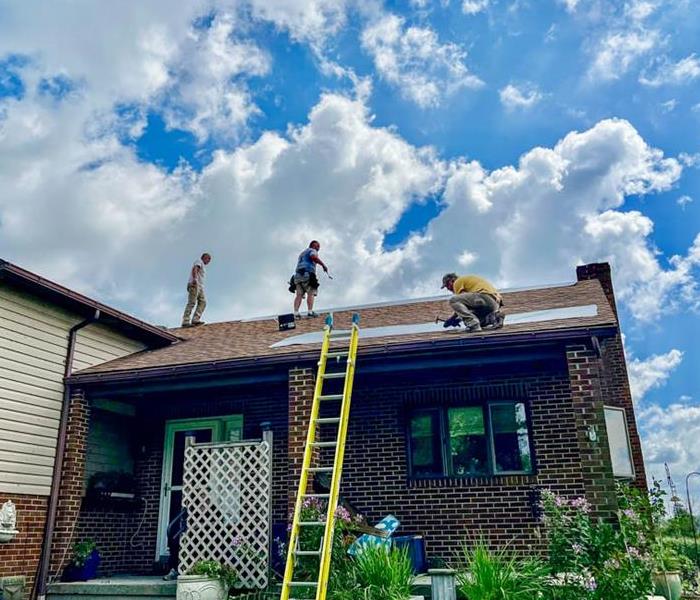Why Water Damage in Older Homes Demands Special Attention
10/21/2023 (Permalink)
 Regularly inspect and maintain the home's exterior, including roofs, gutters, and downspouts to prevent water damage!
Regularly inspect and maintain the home's exterior, including roofs, gutters, and downspouts to prevent water damage!
Historical or older homes carry a unique charm and character, but they also come with their own set of challenges when it comes to water damage. With aging infrastructure and sometimes delicate materials, these properties require special considerations when addressing water damage to preserve their historical value. In this blog post, we will explore some important factors to keep in mind when dealing with water damage in historical or older homes.
Understanding the Structure
Historical homes often feature materials and construction methods that are no longer commonly used. Understand the age of your home and the vulnerabilities of its specific architectural elements, such as wooden beams, plaster walls, or stone foundations. This knowledge will help you assess potential water damage risks more accurately.
Regular inspections can help identify maintenance issues or signs of water intrusion early on. Pay attention to areas prone to leaks, such as roofs, windows, and basements. Look for signs of water stains, rot, or mold growth on surfaces.
Addressing Water Damage
When it comes to water damage in historical homes, it is advisable to consult professionals experienced in working with older properties. These experts will have the knowledge and expertise to understand the unique challenges involved and provide appropriate solutions.
Preserving the historic integrity of the property is crucial. Whenever possible, salvage and restore original materials, such as flooring, molding, or architectural features. Properly drying and treating these materials can help prevent further damage and maintain the authenticity of the home.
Create a restoration plan that addresses both the water damage and any subsequent repairs or renovations that may be necessary. Ensure that the plan adheres to local preservation guidelines and regulations to protect the historical significance of the home.
Protective Measures
Take proactive steps to prevent water damage in the first place. Regularly inspect and maintain the home's exterior, including roofs, gutters, and downspouts. Install appropriate weatherproofing measures, such as sealants and moisture barriers.
Depending on the age and condition of the home, consider implementing or updating drainage systems to redirect water away from the foundation. This can help prevent water infiltration and reduce the risk of basement flooding or structural damage. Controlling indoor humidity levels helps prevent excess moisture, which can lead to mold growth and deterioration of historical materials. Use dehumidifiers and proper ventilation systems to maintain a healthy moisture balance in the home.
By being mindful of the unique considerations surrounding water damage in historical or older homes, you can effectively protect these valuable properties from further harm. Working with professionals experienced in restoring and preserving historical structures ensures that the necessary repairs are done with the utmost care, maintaining the integrity and charm of these timeless homes for generations to come.





 24/7 Emergency Service
24/7 Emergency Service